Traveling the world with a bucket list in hand, I often wondered if the world’s most famous attractions would live up to their legendary hype. From childhood I’d imagined the grandeur of places like the Eiffel Tower and the mystique of Machu Picchu.
But reality doesn’t always match the glossy postcards. On my journey across continents, I visited many iconic sites – and discovered plenty of surprises, both delightful and disappointing.
Here is I expected versus what I actually experienced at each destination.
Eiffel Tower, Paris
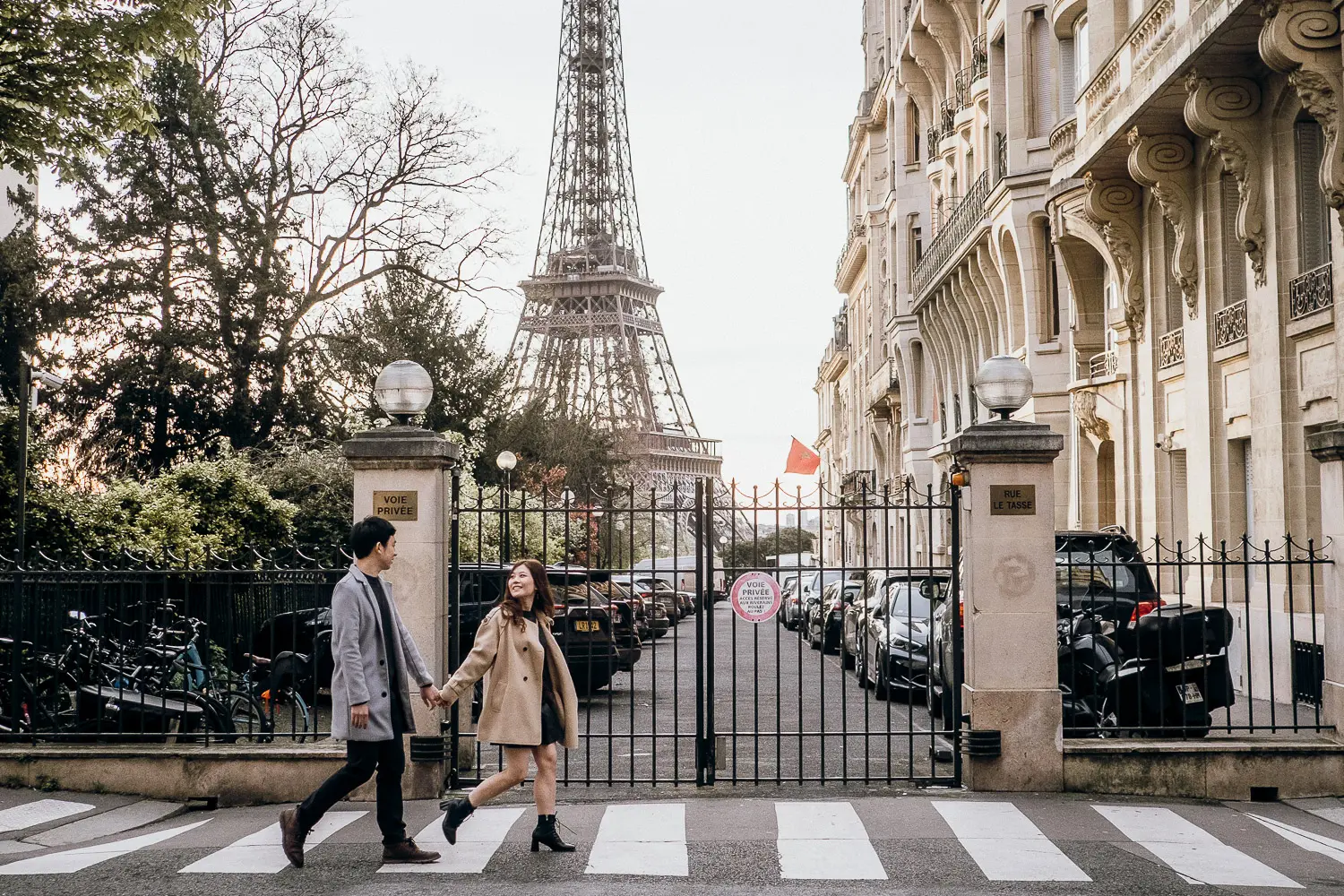
Expectation: Paris’s Eiffel Tower has been the ultimate symbol of romance in my mind for years. I pictured a glamorous ascent to the top, champagne in hand, overlooking the City of Light in all its glory. After all, this 324-meter iron lattice tower is world-famous – surely it would dazzle me at first sight.
Reality: My first surprise came before I even got close: the crowds. Rough Guides readers voted the Eiffel Tower the second most overrated attraction in the world, largely because of “crowds and cost”.
I arrived on a summer afternoon to find snaking queues and vendors hawking souvenirs under the Champ de Mars. With an average of 25,000 visitors per day, personal space was at a premium. I had to decide: pay a hefty fee and wait for an hour or more to ride the elevators, or admire the tower from the ground.
Many travelers shrug that the tower is “nothing special” beyond its iconic status, and I started to understand why. The view from the top, some say, is only breathtaking on a clear day and Paris offers better vantage points like Sacré Coeur for free. Ultimately, I skipped the expensive ride up and found a spot on the grass instead.
Surprise: As dusk fell, my cynicism melted away. The Eiffel Tower began to sparkle on the hour, a glittering display against the night sky. The very crowds that had annoyed me now collectively gasped in delight. I realized that while the daytime experience felt overhyped, seeing the “Iron Lady” aglow at night was unexpectedly magical.
One TripAdvisor reviewer advises to come at night because the illuminated tower is “truly stunning” – and I wholeheartedly agree. In the end, Paris’s iconic tower surprised me by delivering its enchantment in its own timing: not during the long ticket lines or cramped elevator, but on a picnic blanket beneath a twinkling Parisian sky.
Times Square, New York
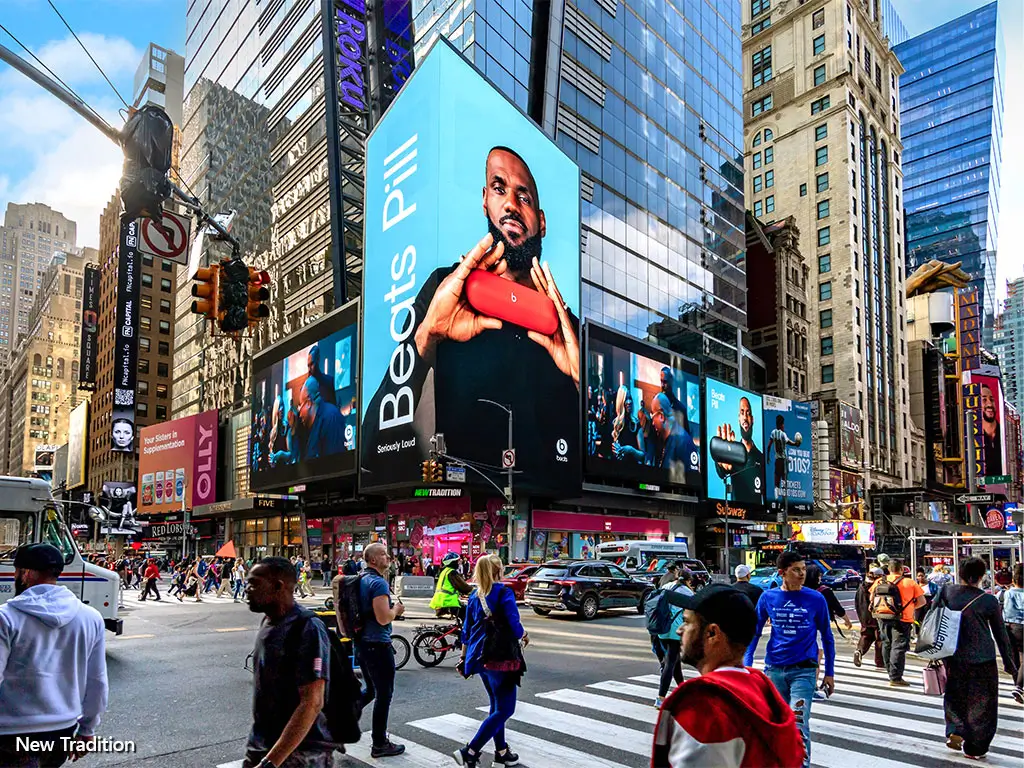
Expectation: The first time I headed to Times Square, I felt like I was stepping into a movie scene. I imagined neon lights, giant billboards, Broadway marquees – the electric heart of New York City. As an avid people-watcher, I even looked forward to the hustle and bustle, expecting an exciting vibe 24/7.
After all, Times Square draws about 50 million visitors a year, with some 330,000 people passing through daily. It’s often called “The Crossroads of the World” – what could be more thrilling?
Reality: Nothing quite prepared me for the onslaught of sensory overload. Visiting Times Square turned into what one guide aptly calls “a disappointing shuffle through dense crowds while being bombarded by bright advertisements and costumed characters soliciting tips”.
I found myself swept in a human tide – it was nearly impossible to stop for a photo without being jostled. The sheer density of people means personal space becomes a luxury. Flashing digital billboards lit up the night as expected, but the experience felt commercial and chaotic rather than magical.
In fact, locals often avoid this area; one local blog bluntly lists “overpopulation” and “an abundance of tourists” as reasons Times Square is overrated. I quickly understood why.
I also noticed how grimy the streets felt – piles of trash bags awaiting pickup, and the smell of food and exhaust hanging in the air. New York’s glamor faded here, replaced by a very real city struggle with crowd management and cleanliness.
Surprise: I was struck by how expensive and tourist-oriented everything was. Chain restaurants like Hard Rock Café were packed with two-hour waits, and even a simple coffee came at a premium price.
Scams lurked too: within minutes, a man dressed as Elmo aggressively demanded a tip for a photo, and another tried the infamous “free CD” handoff followed by payment demand. The “bright lights, big city” allure wore off fast; I was left with a slight headache from the giant LED screens and honking horns.
While Times Square’s energy is undeniable – especially when the New Year’s Eve ball drops, attracting a million revelers – it often feels “more like an overwhelming outdoor shopping mall than a cultural landmark”.
My verdict: Times Square didn’t live up to the hype for me. It’s something to see once for its iconic status, but the surprise was how quickly I wanted to escape to a quieter side street, seeking the real New York beyond the flashing signs.
Machu Picchu, Peru
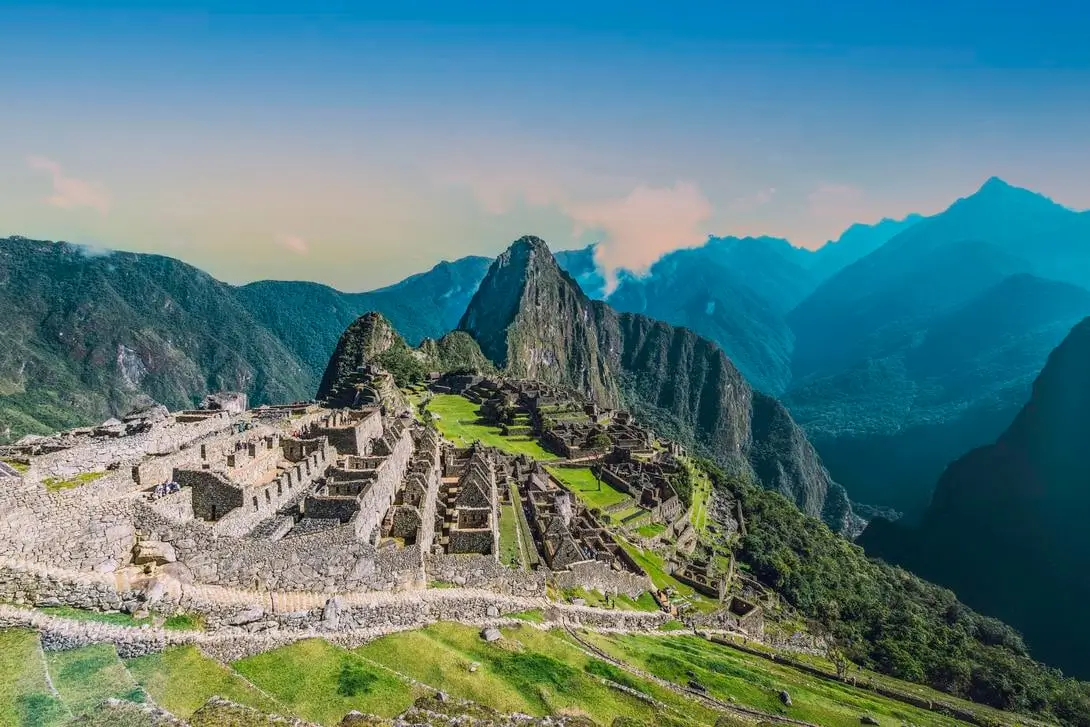
Expectation: As I planned my trip to Peru, Machu Picchu was the crown jewel. This “Lost City of the Incas” perched in the Andes had long captured my imagination.
I pictured an almost spiritual experience: sunrise over the ruins, llamas grazing amid stone terraces, and a profound sense of ancient history. Given its status as one of the New Seven Wonders of the World, I expected Machu Picchu to be life-changing.
I knew it would be popular, but I assumed the magic of the place would outweigh any minor inconveniences.
Reality: Reaching Machu Picchu turned out to be far more arduous and expensive than expected. My day began before dawn in Cuzco, and by the time I had taken a bumpy bus to Ollantaytambo, a scenic train to Aguas Calientes, and then a winding shuttle bus up to the site, I was already fatigued (and motion-sick from the hairpin turns).
Travel blogger Oneika Raymond recounted similar frustrations: a round-trip journey from Cuzco can cost around $200 per person including transport and the $50 entrance fee. I felt that pinch in my budget too.
Arriving at the Machu Picchu entrance, I was met not by tranquil dawn silence, but by chaos – hundreds of tourists jockeying for the perfect photo, selfie-sticks in hand. By mid-morning, the narrow pathways within the ruins became congested, and I often had to wait to squeeze through arches or get a vantage point.
The site allows only a limited number of visitors per day now, yet it still felt crowded. The ambiance was not the serene mysticism I’d imagined, but rather energetic and a bit frantic. One traveler on Reddit admitted that while Machu Picchu is stunning, the “throngs of visitors greatly detracted from my experience.” I found myself nodding in agreement.
Surprise: Perhaps my biggest surprise was my emotional reaction – or lack thereof. Exhausted from the journey and queasy from the altitude, I wasn’t immediately awed. In fact, I felt a twinge of disappointment for feeling this way.
Travel writer Oneika confesses that “Machu Picchu didn’t move me much… I wanted to leave shortly after arrival”. She even got into a spat with her partner, who wanted to bask longer while she was eager to head back down.
I experienced a similar guilt: How could I, a lifelong travel enthusiast, not be utterly blown away by Machu Picchu? Don’t get me wrong – the ruins themselves are impressive and the backdrop of misty green mountains is as picturesque as it gets.
At a quiet moment away from the main terraces, I sat on a stone ledge and did feel awe imagining the Inca engineers and the citadel’s purpose. But the reality of tourism here – the strict circuits you must follow, the whistle-blowing guards enforcing time limits, the tour-guide “mafias” hustling for clients at the gate – all of it chipped away at the enchantment.
In hindsight, I’m glad I saw Machu Picchu, and certain flashes of its beauty – when the clouds briefly parted over Huayna Picchu peak – did stir my soul. However, I learned that sometimes the journey (and its hassles) can overshadow the destination.
Machu Picchu remains a wonder, but for me it came with the sobering surprise that even the most iconic sites can feel overrated if the conditions aren’t right. Perhaps an overnight stay and a second visit at dawn, after the crowds, would change my heart.
Great Wall of China
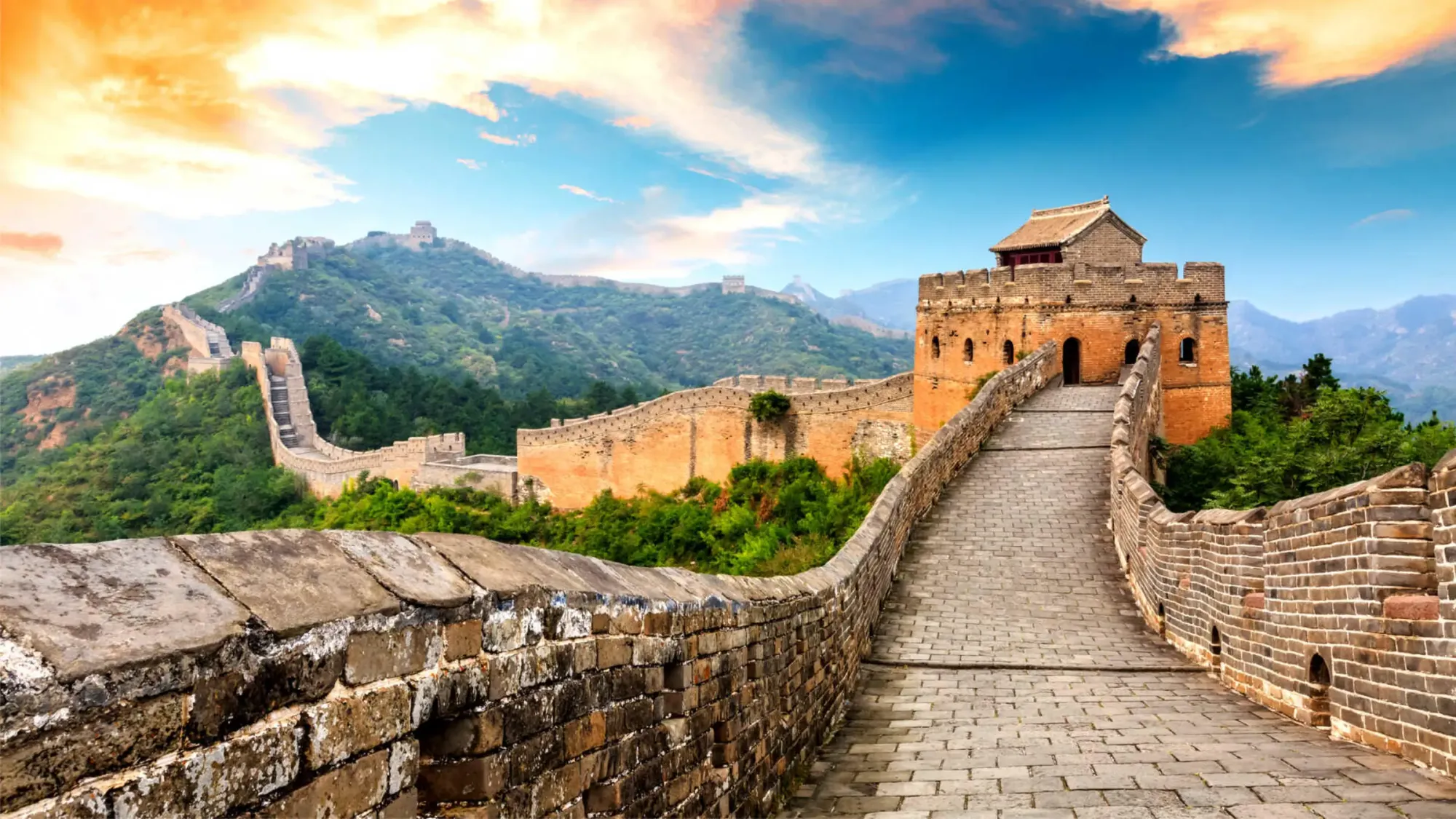
Expectation: The Great Wall of China winds across deserts, mountains, and plains for over 20,000 kilometers – an awe-inspiring testament to human endeavor.
I dreamed of standing atop an ancient rampart, gazing at the Wall snaking off toward the horizon. In my mind, this was a solitary, almost introspective experience: just me, the stones, and history.
I knew the Wall is a major tourist draw near Beijing, but I figured it wouldn’t be too hard to find a quiet stretch to soak in the atmosphere.
Reality: My first visit was to Badaling, the most popular (and most rebuilt) section near Beijing – and it was a lesson learned. I went during a national holiday (mistake!) and encountered what I can only describe as a human traffic jam on the Wall. Parking lots were overflowing; our bus got stuck in a long queue of vehicles just approaching the entrance.
By the time I set foot on the ramparts, I was shoulder-to-shoulder with tour groups. It felt like a theme park. One reviewer quipped that Badaling on a busy day is “China’s grand achievement meets Disneyland”. The crowds were oppressive, and I had to shuffle along at the same pace as everyone else, any notion of quiet contemplation gone.
To make matters worse, hawkers in periodic market stalls on the Wall itself shouted for attention, selling everything from “I Climbed the Great Wall” T-shirts to cold drinks. The commercialism and noise were jarring in what I imagined as a sacred historic site.
Surprise: I was honestly disappointed – until I gave the Great Wall another chance on a different day, at a different section. Two days later, I hired a driver to take me to Jinshanling, a less-touristy stretch farther from the city. The difference was night and day.
I hiked for long intervals completely alone, hearing only the wind and my footsteps on the ancient stones. Here, I finally felt the majestic isolation I craved. It struck me how an attraction’s reputation can be a double-edged sword: the Great Wall is undoubtedly great, but where and when you visit changes everything.
Many travelers echo this. Some TripAdvisor reviews for the popular sections are scathing: one visitor who felt misled by a tour company ranted about “LONG LINES… lines to ride the shuttle, lines to take the cable car, lines to walk up the stairs,” ultimately advising others to “avoid going here at all costs”.
Another called the Badaling experience “awful, horrible, traumatic” due to crowds and touts. I empathize – my surprise was how stressful the Wall could be under those conditions. On the flip side, standing on a remote rampart watching the sunset, I was surprised by how deeply the Great Wall moved me. It became one of my favorite travel memories once I escaped the tourist bottlenecks.
My takeaway: the Great Wall isn’t overrated, but Badaling might be. If you plan wisely (go early, avoid peak holidays, or choose a less famous section), this world wonder can absolutely live up to the hype. Otherwise, you may spend more time battling crowds than appreciating the scenery.
Colosseum, Rome
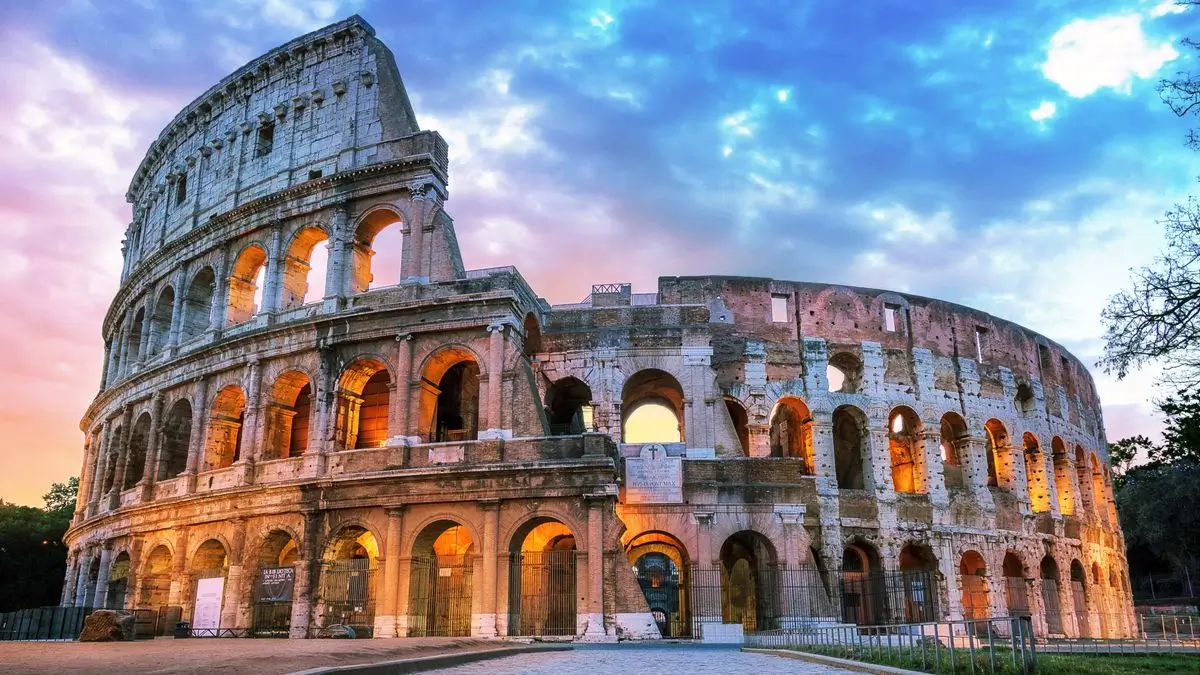
Expectation: The Colosseum in Rome has loomed large in my imagination since grade school history class. I pictured walking through its grand arches, hearing the echoes of ancient gladiator cheers.
As one of the most famous structures of the Roman Empire, the Colosseum should embody grandeur and drama. I expected to be impressed by its sheer scale and transported back in time, perhaps even moved by the contrast of its bloody history versus its present-day peaceful state.
Reality: Seeing the Colosseum from the outside did wow me – at first. The oval amphitheater is enormous, and thinking about its nearly 2,000-year history gave me chills.
However, the practicalities of visiting quickly brought me back to earth. The line to get in stretched across the plaza (despite having a pre-booked ticket, I still waited due to security checks). Inside, I was struck by how ruined and sparse the interior actually is.
Huge sections of the Colosseum’s seating and floor are gone, leaving a skeleton that requires some imagination to fully appreciate. One fellow visitor’s comment rang in my ears: “the building itself was not so interesting – it was just a big theatre”, and they lamented that “so much of the tiered seating is gone”. In truth, after the initial awe, I understood that sentiment.
Without a guide or prior knowledge, one could walk the circuit in 30 minutes and, aside from a few informational plaques, not grasp much of the Colosseum’s storied past. The crowds didn’t help: even in the shoulder season, tour groups clustered around every vantage point.
At times I had to elbow gently to get a photo of the arena floor. Outside the Colosseum, the experience was marred by “too many hawkers” aggressively selling trinkets and selfie-sticks. Every few steps someone tried to hand me a flyer for a tour or gladiator photo op. It was hard to feel the ghosts of gladiators amid the modern hustlers.
Surprise: I was surprised by how much the quality of the tour (or lack thereof) can impact your experience. My first visit, I wandered alone and felt a bit underwhelmed. The next day, I joined a guided tour that included the underground chambers.
It was far more engaging – the guide painted vivid pictures of how animals were kept below and hoisted up for battles. Still, some guided tours can disappoint too; Rough Guides cited one visitor’s complaint that their guide rambled off-topic about unrelated history and rushed them through, making it an unsatisfying hour.
Common complaints include the long queues, degraded conditions, and limited access to parts of the structure. I can confirm those are valid. And yet, standing in the center of the arena (on a reconstructed platform) was a moment that gave me goosebumps – imagining 50,000 roaring spectators and the dramas that unfolded there. Did it live up to the hype? Partly.
The Colosseum surprised me by being both smaller in substance (the interior is essentially an empty shell now) and yet larger in emotion when I contemplated its history. I left a bit conflicted – impressed by the idea of the Colosseum, but reminded that world-famous ruins often require an active imagination (and tolerance for crowds) to truly appreciate.
In my travel journal I wrote, “Not as breathtaking as I’d hoped, but when I closed my eyes I could almost hear the gladiators” – perhaps that’s as much magic as reality allows.
Taj Mahal, India
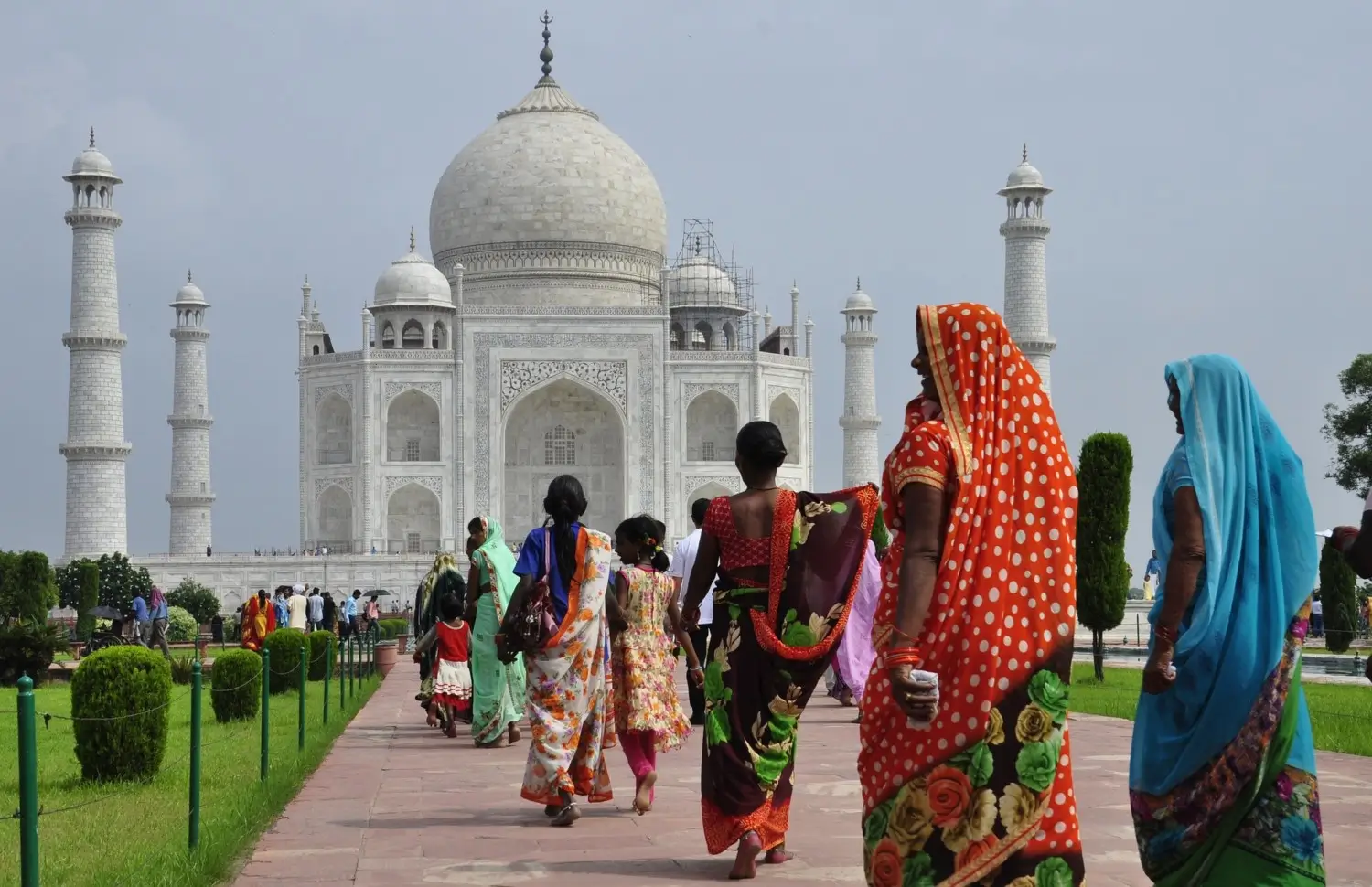
Expectation: The Taj Mahal is often billed as the most beautiful building in India and on Earth – a marble poem of love, built by Emperor Shah Jahan for his wife Mumtaz. My expectations were sky-high.
I imagined being awestruck by the Taj’s white dome glowing at sunrise, mirrored in its long reflecting pools. I expected a feeling of peace and romance, given its origin story, and perhaps even a tear in my eye at first sight (yes, I’m a sentimental traveler!).
I was aware it’s immensely popular – around 7–8 million visitors per year – but I hoped the site’s management and the vast gardens would absorb the crowds.
Reality: My first glimpse of the Taj Mahal through the main gateway literally made me gasp – it was that beautiful. In the soft morning light, the mausoleum looked ethereal, almost floating.
For a moment, it absolutely lived up to the hype. But as I proceeded closer, reality intervened in subtle ways. First, the crowd: even at 6:30am there were hundreds of other tourists who had the same idea to come early.
We all respectfully took turns at the popular photo spots (like the famous “Princess Diana bench”), but you could sense everyone’s urgency to get their perfect shot before more people arrived.
The Taj Mahal’s beauty is such that it tends to mesmerize you at a distance – I was indeed mesmerized, wandering the ornamental gardens and marveling at the flawless symmetry and the way the marble dome seemed to change color with the rising sun.
Up close, the intricate details of the pietra dura (stone inlay) work are astounding – flowering vines and Qur’anic calligraphy carved with unbelievable precision into the marble.
Where things fell short was inside the mausoleum. After removing my shoes and shuffling in with a thick crowd, I found the interior dim and unremarkable – just two cenotaphs (tombs) surrounded by a perforated marble screen.
It was hot and stuffy inside; people whispered out of respect, but it felt claustrophobic. The truth is the interior of the Taj is not nearly as lavish as one might think – the grandeur is all external. I found myself eager to get back outside to gaze at the building itself again.
Surprise: The Taj Mahal exceeded my expectations in a way few attractions have. A travel writer on Global Gallivanting admitted, “I really didn’t expect visiting the Taj Mahal to be this enthralling,” saying her first view in the misty morning “literally took my breath away”. I felt the same.
There was a moment when the sun fully rose and the Taj’s marble shifted from a bluish hue to bright white, shimmering against a clear sky – it was absolutely breathtaking.
I had worried such an over-photographed icon might feel too familiar or overrated, but seeing it in person was different. It crushed any cynical thoughts; in that instant, the Taj Mahal lived up to the hype and then some.
That said, a few practical surprises: the surrounding city of Agra is noisy and chaotic, which contrasts sharply with the serenity inside the Taj complex.
Stepping back out, I was immediately accosted by tuk-tuk drivers and souvenir sellers. Also, security is tight – no large bags, no drones, and oddly no reading material (a guard made me check a book I had in my purse).
These measures, while understandable, can catch visitors off guard. Lastly, the Taj is closed on Fridays, and I met a disappointed traveler who hadn’t known that and had to rearrange plans.
My verdict: The Taj Mahal was one famous attraction that did surprise me in a delightful way. Its beauty is indescribable and stirred me deeply, even as the practical aspects (crowds, heat, a 3-hour time limit on tickets) reminded me that every rose has its thorns. I left with my heart stolen by the Monument of Love, feeling that rare satisfaction of a dream fulfilled.
Pyramids of Giza, Egypt

Expectation: The Great Pyramids of Giza – the last surviving Wonder of the Ancient World. I grew up seeing these pyramids in documentaries and adventure films, always depicted deep in a pristine desert.
I imagined a tranquil, almost mystical site at the edge of the Sahara, with perhaps a camel or two silhouetted against the sunset. I knew in reality the Giza pyramids are at the outskirts of Cairo, but I still expected a decent buffer of desert that would make me feel like I’d stepped back in time.
My hopes were to be overwhelmed by their size and the ingenuity it took to build them, and to maybe enter one of the pyramids to feel the ancient energy inside.
Reality: Seeing the pyramids for the first time did floor me – their scale is massive and truly impressive. No photo does justice to standing at the base of Khufu’s Great Pyramid, tilting your head back to take in a pile of stones nearly 150m tall. However, much of the experience around the pyramids was, frankly, stressful and disheartening.
Firstly, the city of Giza comes right up to the pyramid complex – literally across the street there’s a KFC and Pizza Hut. That was a jarring surprise. The moment I arrived, a swarm of unofficial “guides,” camel owners, and trinket sellers descended. It’s well known that touts here are persistent, but it was beyond anything I’d experienced. A fellow traveler’s review echoed my thoughts: “The site is amazing.
The people around… make it a site that is better seen in postcards.” There were attempts to “con” us at every turn – one man tried to tell me my ticket didn’t include a certain area (it did), offering a “special tour” instead; children pestered to sell cheap souvenirs; camel drivers followed for several minutes pleading for business. It was hard to relax and simply admire the pyramids.
I also witnessed disturbing scenes of animal mistreatment: overworked horses being whipped to pull carriages and camels with poorly fitted saddles showing sores. A TripAdvisor report I later read sadly described “horses and camels beaten and bleeding… loaded with way too many tourists”.
Unfortunately, that was not an exaggeration. The area immediately around the pyramids felt dusty, chaotic, and somewhat dirty – there was litter in the sand and a general lack of facilities (bring water and maybe even your own toilet paper).
Surprise: Despite all this, I must say the ancient wonder still shone through when I managed to tune out the distractions. Venturing around to the less crowded far side of the pyramids, I found a quiet spot to sit. In that moment, gazing at these 4,500-year-old structures, I was filled with awe.
You can actually touch the stones and feel how huge each block is. Climbing up a few layers (where allowed) brought out my inner child adventurer. Also, going inside the Great Pyramid’s narrow tunnel to the King’s Chamber was a surreal highlight – hot, humid, cramped, but unforgettable.
The surprise here is how mixed my emotions were. I was awe-struck by the achievement of the pyramids, but equally struck by how mismanaged and overwhelming the visitor experience can be. One scathing review declared Giza “one of the filthiest places on earth” now – a harsh assessment perhaps, but it shows how strongly the issues of cleanliness and aggressive touts impact visitors.
My personal verdict: the Pyramids themselves are absolutely not overrated – they are as incredible as you imagine. But be prepared for the modern realities: noise from the city, hustlers at every step, and the need to assert boundaries firmly (a polite but stern “La, shukran,” – Arabic for “No, thank you” – became my mantra).
In hindsight, I cherished the chance to see this wonder, but I also left with a bit of relief to escape the gauntlet outside. It’s a classic case where the attraction is legendary, but the surrounding experience was the real letdown.
Stonehenge, England
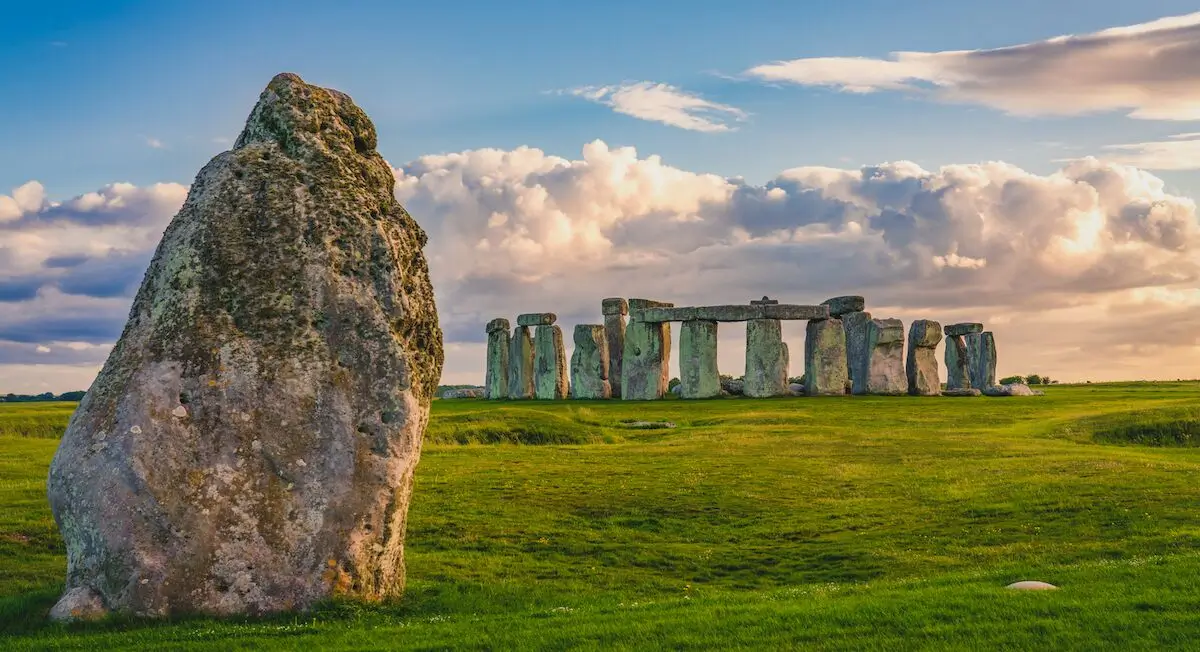
Expectation: The very word Stonehenge conjures mystery – I pictured a misty Salisbury Plain at dawn, with the silhouettes of massive stones forming a prehistoric circle.
I expected a sense of druidic mysticism, an ancient energy emanating from the site of solstice celebrations over millennia. Since you often see Stonehenge isolated in photos, I imagined a relatively quiet field where one could walk among the stones (or at least get quite close) and ponder how and why Neolithic people labored to erect this monument.
There’s so much legend around Stonehenge that my expectations were for a near-reverential experience.
Reality: Visiting Stonehenge was a lesson in managing expectations. The site is, in reality, just off a major roadway – I could see and hear cars not far away, which immediately broke some of the magic.
The stones themselves, while large, were a bit smaller than I anticipated (perhaps because I’d seen bigger monoliths elsewhere, like in Carnac, France). Also, since the 1970s visitors generally cannot walk right up to the stones except on special occasions.
There’s a perimeter rope keeping tourists at a distance of some yards. I circled around with the provided audio guide, which was informative, but I couldn’t help noting the remarks I overheard. A bored teenager kicked at the grass and said, “So… it’s just a bunch of rocks.” Others around me had similar sentiments: Rough Guides actually reported many travelers were unimpressed that Stonehenge is “just a pile of stones… with not much to see”.
That may sound harsh, but on a normal day you won’t witness any pagan ceremonies or feel any vibrations – you’ll mostly see a ring of standing stones that, while impressive for their age, don’t visually overwhelm.
The lack of contextual information on-site (much is in the distant visitor center) means if you don’t do your homework, it might indeed seem underwhelming and puzzling.
Furthermore, there were restrictions and logistics I hadn’t expected: you park at a visitor center and take a shuttle or walk 1.5 miles to the stones. The whole operation felt rather commercial – tickets are pricey (around £25 per adult) and timed, and you exit through a gift shop selling Stonehenge keychains and megalith-shaped chocolates, which took away from the authenticity of the experience for me.
Surprise: I was honestly surprised by how many people around me were vocal about their disappointment. Stonehenge topped a Rough Guides readers’ poll as the world’s most overrated attraction, with complaints about it being “tiny, overpriced” and lacking atmosphere.
One visitor famously exclaimed, “It was soooo small!!” and noted it’s right by a motorway – exactly my observation when I saw a double-decker bus rolling past in the distance. Another gripe was that it “had no atmosphere” and felt like a “been there, done that” item. I wouldn’t go that far personally; I did feel a quiet wonder standing there, especially upon reflecting that those stones were hauled from 150 miles away some 4,500 years ago.
When a breeze swept over the plain and the sun broke through the clouds, illuminating the lichen on the sarsens, I felt a connection to antiquity that gave me goosebumps. However, I also acknowledge that much of the mystique I anticipated requires imagination.
The site’s management, while preserving the stones, does keep you at arm’s length, which can make it hard to feel deeply engaged. Is it overrated? Perhaps in pure visual terms, yes – if you expect grandeur like the pyramids, you’ll be let down. The surprise for me was that Stonehenge is more about what you bring to it (curiosity, knowledge, a willingness to envision the past) than what it instantly gives.
I left with a respect for the site’s significance, but also an understanding of why many travelers say “it’s just some rocks.” It’s a humbling reminder that hype can inflate our imagination, and sometimes an attraction’s story matters more than its appearance.
Sydney Opera House, Australia
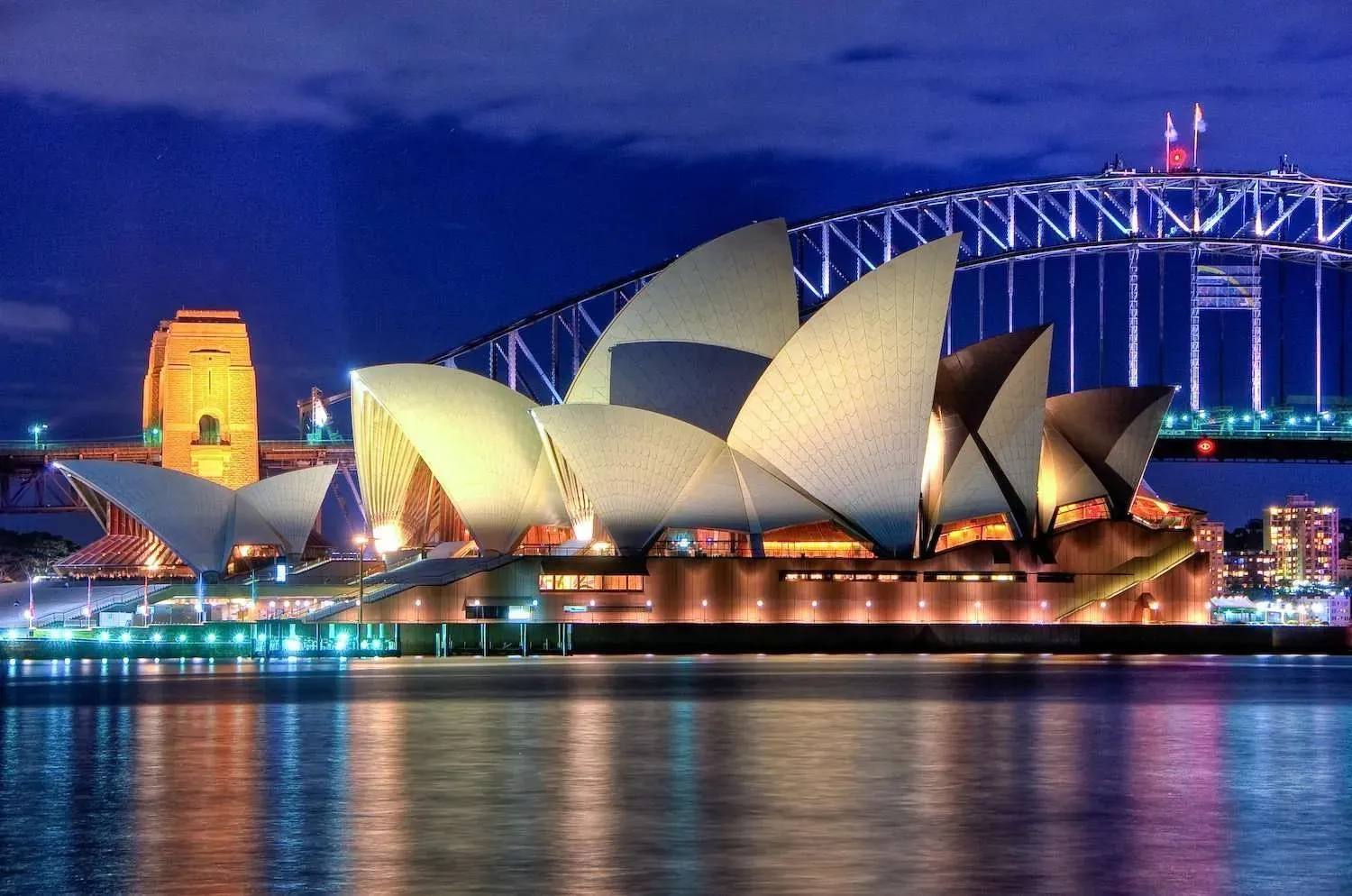
Expectation: The Sydney Opera House is one of the most recognizable buildings of the 20th century – those white shell-like sails unfurling on Sydney’s waterfront. I anticipated being wowed by its architecture from all angles: up close, far away, inside, outside.
As a lover of architecture, I expected the Opera House to impress me with both its bold exterior design and its function as a cultural venue. I even hoped to catch a performance there, imagining that would be the ultimate way to experience it.
Given its UNESCO World Heritage status, my expectation was that the Opera House would feel grand and inspiring, a symbol of Sydney’s vibrancy.
Reality: In person, the Sydney Opera House was indeed striking – but the experience had unexpected facets. First off, the building is a bit smaller than I thought it would be. Perhaps because it dominates postcards, I expected it to dominate the skyline more.
It’s certainly prominent on Bennelong Point, yet the city’s modern skyscrapers tower behind it. Many travelers echo this initial reaction: “I found it smaller than expected; underwhelming,” noted one Rough Guides reader. I wouldn’t call it underwhelming myself – I loved walking around it on the broad promenades of Circular Quay.
The exterior is photogenic from every angle; I must have taken dozens of pictures of those gleaming white tiles catching the sunlight. However, when I joined a daytime interior tour, I was surprised that the inside didn’t wow me as much. The spaces were certainly nice – large wood-paneled concert halls with great acoustics – but in design terms, the interior felt plain and a bit dated compared to the stunning exterior.
Some visitors described the inside as “empty” or not particularly special unless you’re there for a show. I agree that the real magic of the Opera House is how it looks from the outside, especially at dusk when it might be lit with colorful projections, or from a ferry in the harbor where it forms the perfect Sydney postcard with the Harbour Bridge nearby.
Surprise: What surprised me was that, unless you have a ticket to an event, there isn’t much to do inside the Opera House. You can’t freely wander most halls without a tour or show ticket, so many tourists just walk around the outside and leave.
Rough Guides readers concluded it’s an attraction best “viewed and admired from outside”, and I tend to agree. One even joked that unless you’re into architecture or have a concert to attend, there’s “nothing else to partake in”. That might be a slight exaggeration (there are a couple of restaurants and gift shops in the complex), but it highlights a point: the Opera House is an iconic backdrop and venue, yet as a tourist sight alone it’s fairly quick to see.
I was also a bit let down that I didn’t feel a strong emotional connection – unlike historical sites, this modern building didn’t carry a deep narrative for me, other than the interesting story of its construction and the Danish architect Jørn Utzon’s saga. Perhaps I expected to be moved simply by its beauty, and while it is beautiful, it felt a touch impersonal.
On the positive side, I took a local’s advice from a Rough Guides snippet and spent more time at Darling Harbour and other nearby areas. Watching the sunset with the Opera House in silhouette was lovely, and I felt my appreciation grow then.
In summary, the Sydney Opera House surprised me by being a bit colder than its bold sails suggest – it’s visually stunning but didn’t capture my heart in the way older, history-steeped attractions have. I’d still rank it as a must-see for anyone in Sydney, but I learned that sometimes an icon is best enjoyed as a scenic backdrop to city life, rather than a hands-on attraction.
Niagara Falls, USA/Canada
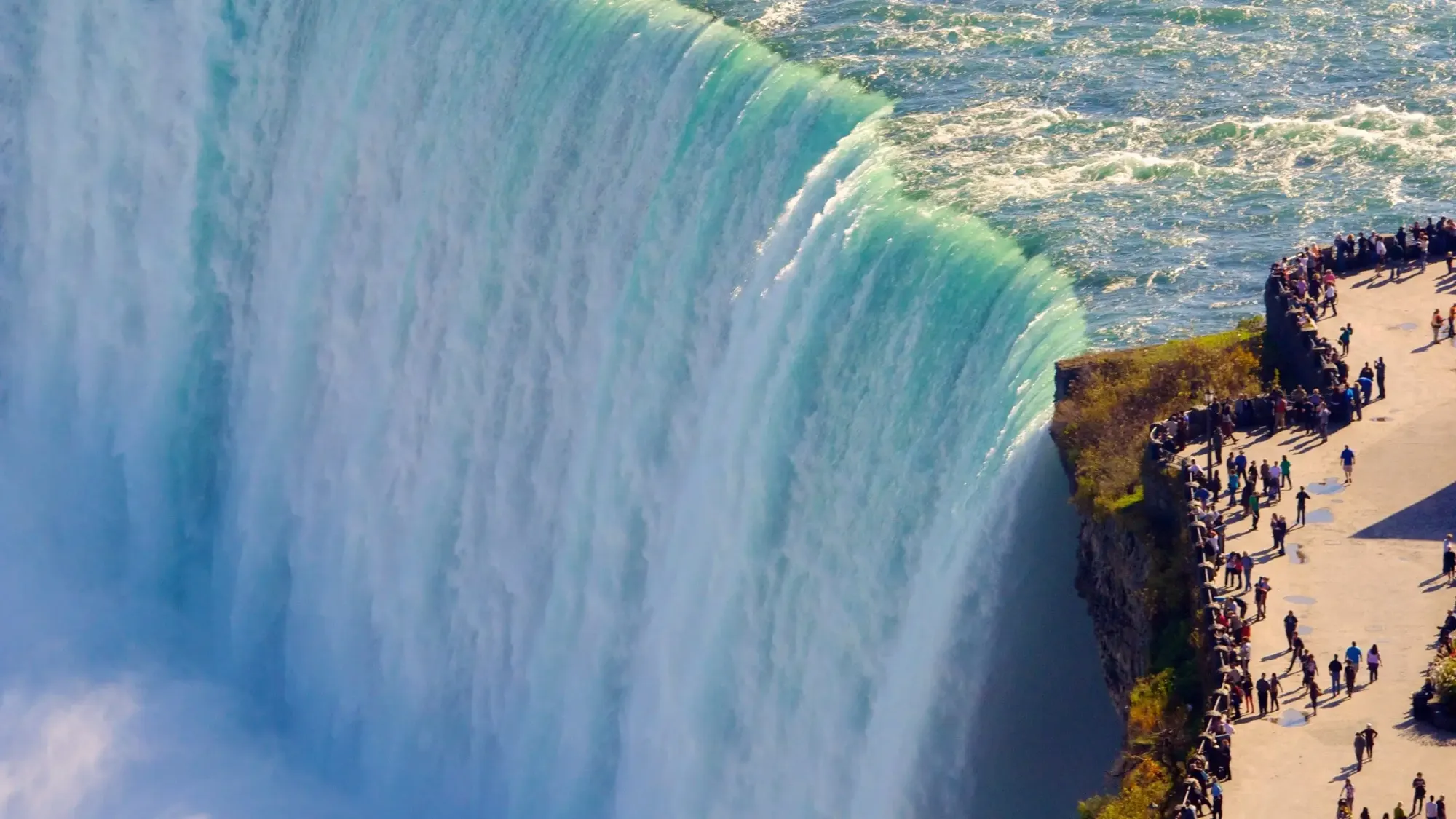
Expectation: I included Niagara Falls on my itinerary as a bit of a wildcard. It’s a natural attraction rather than a man-made one, but world-famous nonetheless, straddling the US-Canada border.
I imagined an almost sublime experience – the thundering roar of millions of gallons plunging each minute, a misty rainbow arcing across the gorge. I expected the falls to be one of the most awe-inspiring sights in nature, on par with places like the Grand Canyon.
I also knew Niagara has a reputation for being very commercialized on the Canadian side (Clifton Hill), but I hoped the sheer power of the falls would drown out any tackiness.
Reality: Niagara Falls certainly delivered on spectacle: the moment I first glimpsed Horseshoe Falls (the largest of the three falls at Niagara), I felt a jolt of amazement. The curtain of water is so wide and the drop so fierce that a constant mist rises up, drenching anyone at the railing.
The sound is a continuous thunder, a reminder of nature’s strength. For the first fifteen minutes, I was transfixed, just soaking in the view and the feeling of the cool spray on my face. However, once that initial awe settled, I began to notice the surroundings – and that’s where Niagara’s reputation catches up. Turning around from the railing on the Canadian side, you face a garish scene of tall hotels, casinos, neon signs for arcades and chain restaurants.
It’s as if a mini Las Vegas sprung up beside this natural wonder. As some travelers put it, Niagara “doesn't really feel like a natural wonder anymore” because the Canadian side is so built up with tourist infrastructure. I stayed in a high-rise hotel where I could literally see the falls from my room, which was fantastic, but at street level I was immediately in a maze of Hard Rock Cafes and souvenir shops selling maple leaf trinkets.
The American side is quieter and more park-like, but offers a less full-on view of the falls. I did the classic tourist activities – Maid of the Mist boat ride and the Journey Behind the Falls tunnel. Both were fun and drenching (poncho absolutely required!), yet extremely crowded with long lines.
It was clear Niagara Falls draws huge crowds (around 8 million visitors a year). At peak times, the wait to board the boat or even get a spot at the viewpoint can test one’s patience.
Surprise: The mixed reviews I’d heard turned out to be true in their extremes. On one hand, Niagara’s natural majesty is real: I felt genuinely moved watching the emerald-green Niagara River surge over the brink and crash into white foam below.
At sunrise, with almost no one around, the falls were soul-stirring. But many travelers (and I at moments among them) found Niagara overrated. In a Rough Guides poll it was deemed the fourth most overrated attraction, with people saying “It’s a big waterfall — others are more impressive” and that after the first look “it wasn’t as impressive as we expected”.
I think context matters – if you’ve seen Iguazú or Victoria Falls, Niagara is smaller, yes. For me, Niagara was my first major waterfall, so it certainly impressed, but I could imagine the sentiment of “maybe it’s too familiar, we see pictures of it everywhere” playing a role.
The biggest surprise (or maybe not a surprise at all) was how tacky the surrounding tourist traps were. One harsh reviewer said Niagara “felt like a cheap funfair” and that phrase stuck with me as I walked Clifton Hill among wax museums and candy shops blaring music. It’s the starkest contrast – nature’s grandeur on one side, carnival kitsch on the other.
Ultimately, I wouldn’t call Niagara Falls overrated in terms of the falls themselves – they are truly awesome and everyone should see them once. But I do think the experience around the falls can easily feel cheapened if you spend too much time in the commercial fray.
My advice (and what I learned): focus on the natural moments – ride that boat into the mist, stand by the railing at night when the falls are lit in colors, maybe even explore the beautiful Niagara Gorge trails downriver – and then politely skip the fudge shops and haunted houses. Niagara surprised me by being both breathtaking and a bit heartbreaking; it’s a lesson in how an incredible sight can be marred by overzealous tourism.
Yet when I close my eyes, I still see and hear those crashing waters – and that is a memory I’ll cherish despite the plastic ponchos and neon signs that accompanied it.
After this journey, I’ve realized that “overrated” is often in the eye of the beholder. World-famous attractions are famous for a reason – usually they are singularly impressive, historically significant, or culturally iconic. But travel is deeply personal.
My experiences were influenced by timing, crowd levels, and my own mindset on each day. I learned that some sites (like the Taj Mahal) can surpass even the grandest expectations, especially if you catch them at the perfect moment.
Others can falter under the weight of hype or hordes of tourists, requiring a bit more effort or imagination to appreciate. A fellow traveler once told me, “One man’s paradise is another man’s purgatory,” and I finally understand that.
So, are these attractions overrated? Some were, some weren’t – and many were both at once. The Eiffel Tower’s magic came after I stopped looking for it; Machu Picchu’s wonder was tempered by its journey; Stonehenge was underwhelming until I considered its age and purpose. Each place surprised me in a different way, teaching me to approach famous spots with open eyes and realistic expectations. In the end, I don’t regret visiting any of them.

